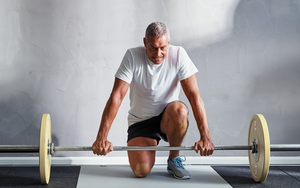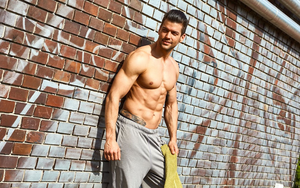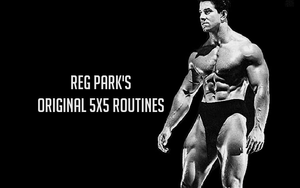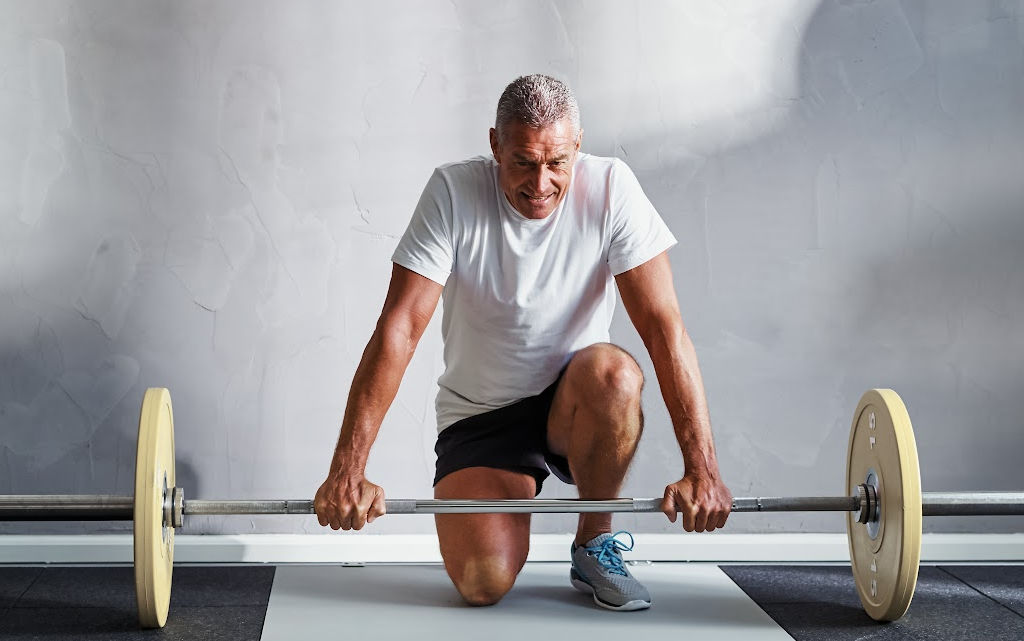
Training for the Older Trainer: The Definitive Guide
Something all of us have to face sooner or later is aging. Past a certain point, we face age-related muscle loss or "sarcopenia' our hormones start to change, our cells and joints alike gradually, slowly wear out and our bodies become more sensitive to various stressors: physical, emotional, dietary, lifestyle, environmental and so forth.
The key to continuing to make progress and in our training and overall health is to be very proactive and pay more attention to the fine details in training, diet and lifestyle.

Life, when you get down to it, is all about adaptation to an ever-changing landscape, both around us and within.
Being just over 50 myself, one thing I've noticed is that although my strength is pretty much the same, my recovery isn't quite as good as it once was.
Not only do I need to pay more attention to cycling heavy and light days with sometimes more rest days, I really need to listen to my body more than ever. Injuries take longer to heal and so does the nervous system.
Diet Becomes More Critical
This may sound like a generalization, but I really think its true for the most part. Lets face it, many of us can't eat like we used to, or even what we used to.
Lots of fast food that we used to eat after the bar late at night, just doesn't agree with us anymore for whatever reason. Certain foods now cause us digestive issues.
We sure can't have the nightlife like we used to, being out till last call and training the next day or having football practice first thing in the morning.
One thing we need to do now more than ever, is clean up our diet. Remove any processed food, and anything with additives you can't pronounce.
Start shopping and eating local with fresh grain-fed, hormone-free meats, and produce. Not eating anything that your great-grandparents wouldn't have recognized as food is likely a good rule of thumb.
Stay away from artificial sweeteners and MSG based additives like "autolyzed yeast extract" etc, as these are proven excitotoxins and are not good for your nervous system. Learn to cook and prepare your own food.
Its ok to have the occasional cheat meal, but even that doesn't have to be garbage.
I would look into carb cycling: on training days eat 2-2.5 grams of carbs per pound of body weight and on off days .5 to 1 grams per pound. Also make most of your diet consists of proteins, vegetables and fruit.
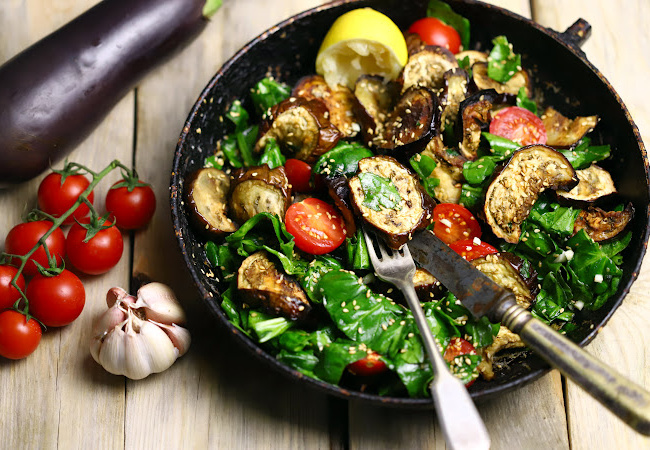
Find a diet that you like and can stick to and one which agrees with you - something which will take some experimentation.
Use a tool to help you keep track of your macros to ensure you are getting the requisite amount of calories, proteins, fats, carbohydrates, vitamins and minerals. One such tool is the free Cronometer (mobile and web-based app). I can't say enough about how useful this app is, and is perfect for even keeping a food journal.
If you are having a hard time losing bodyfat, I would look into intermittent fasting.
Optimizing General and Hormonal Health
As with our food supply, there are so many chemicals which we are exposed to on a daily basis which are major neuroendocrine disruptors. BPA in plastic is one, as are all of the various xenoestrogens - literally synthetic estrogens which you can imagine are absolute hell for our testosterone levels and fertility.
If you are over 40, it definitely would not hurt to get a blood panel to include checking your hormone levels to get the big picture of where you stand.
If so, ideally you want to check your total and free (unbound) testosterone, estradiol (E2 estrogen), thyroid (both T4 and T3) levels, prolactin, sex-hormone binding globulin (SHBG), luteinizing hormone (LH) and follicle secreting hormone (FSH).
Look up the symptoms of low levels of these hormones and if you have a some of them, addressing this will be more important than choosing your exercise routine.
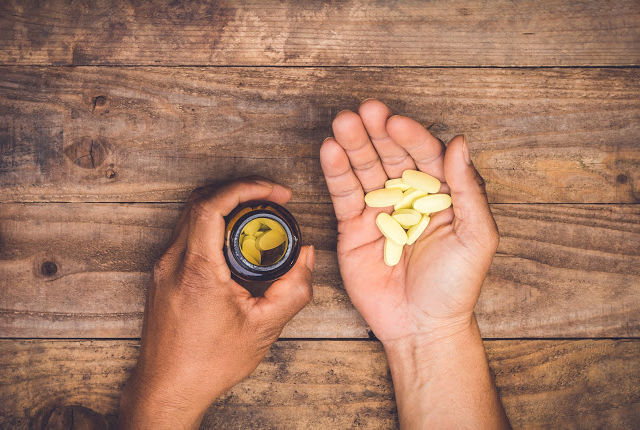
A good base supplement stack for optimizing your hormones and general health as you age would entail a combination such as:
- Vitamin D
- Zinc
- Magnesium
- Fish oil of good quality with high EPA/DHA levels
- Creatine
Creatine is one of the essential supplements you should consider taking, particularly post-age 40. It's benefits do not only end with helping to build muscle, increase strength, and slow down age-related muscle loss/sarcopenia, a lot of fairly recent research shows it also has massive benefits for improving and maintaining cognitive health as well.
The trace mineral Boron have been shown to increase circulating levels of free testosterone, improve cognitive performance, optimize bone density and speed up wound healing.
While there is some evidence for some herbs being beneficial for increasing testosterone humans, these mostly similarly include ones which assist increasing free unbound testosterone, such as Tongkat Ali (eurycoma longifolia) and Forskolin)
Other supplements are extremely supportive for anti-aging, boosting energy and athletic performance and slowing down sarcopenia.
These would include looking into supplements such as co-enzyme Q10 for boosting mitochondrial health, and importantly, boosting glutathione levels with taurine, glycine (particularly in combination with N-acetylcysteine).
A game changer for my own arthritis has been the resin boswellia (particularly synergistic with Curcumin) for osteoarthritis.
Our Training And Fitness Priorities Change
When we get older we lose mobility more than strength at a certain age. I would define "mobility" itself as the ability of a joint to move freely through its full range of motion without restriction. This encompasses both the flexibility of the muscles surrounding the joint and the ability of the joint itself to move.
Good mobility is crucial for performing daily activities and exercises with proper form and efficiency, and it helps in reducing the risk of injury. It involves a combination of muscle flexibility, joint stability, and the nervous system's ability to control movements smoothly and efficiently.
Mobility exercises often focus on improving the range of motion, enhancing muscular flexibility, and strengthening the muscles around the joints to support and stabilize them during movement..
If we make half of our training focus on strength and the other half on mobility, this could well be the design for our lives for the years ahead.
You should look at including static stretching as well as dynamic mobility into your daily routine in any event and some more extensive mobility work beyond that with some conditioning the same day 3 times a week at least. This would also entail things such as a sound mobility/flexibility routine which comprises joint mobility and balance, band work, rotator cuff work and so on.
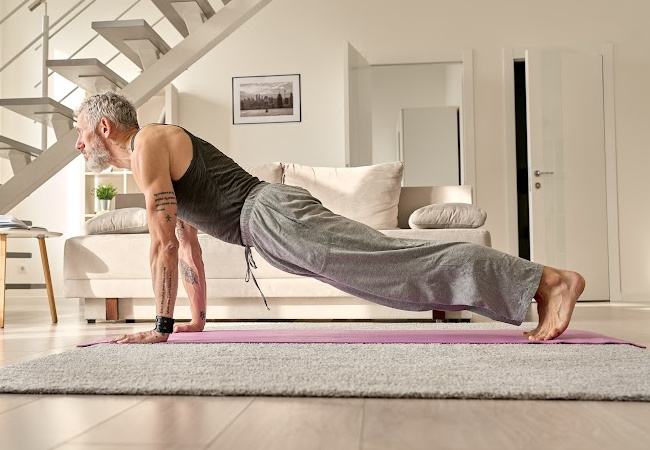
For improving cardiorespiratory fitness, getting in somewhere around 150 minutes a week of so-called "zone 2" (at a level where you can still carry on a conversation cardio is vital. This could be, at best, some sort of low-impact activity such as stationary bike, rowing maching, brisk walk or leisurely swimming.
Zone 2 training refers to a specific intensity level of cardiovascular exercise that is relatively low to moderate, aimed at improving aerobic fitness. This training zone is often determined by heart rate, falling between 60% to 70% of an individual's maximum heart rate. The key characteristics of Zone 2 training include:
- Aerobic Endurance: It primarily targets the aerobic energy system, which relies on oxygen to generate energy for prolonged activity.
- Fat Burning: This zone is often touted for its ability to efficiently use fat as a primary fuel source, alongside carbohydrates.
- Sustainable Effort: Exercises performed in Zone 2 can be maintained for extended periods without leading to significant fatigue or requiring extensive recovery time.
- Foundation Building: It's crucial for building a strong aerobic base, improving cardiovascular health, and enhancing overall endurance.
- Recovery: Zone 2 training is sometimes used for active recovery due to its lower intensity, helping to stimulate blood flow and aid in the recovery process without placing additional stress on the body.
Training in this zone is beneficial for athletes of all levels, from beginners looking to build fitness safely, to advanced athletes aiming to increase their aerobic capacity and endurance without overtraining.
With resistance training, provided you have the proper training approach and diet, research proves that you are never too tol to gain muscle.
Never too old? Yes, even past your mid-70s!
Research done by Brad J. Schoenfeld et al several years ago distilled a meta-analysis of 22 studies on subjects 75 and older found what they call a significant effect of resistance training on muscle strength. Even studies in the very old, 90+, have shown similar results!
How Much Muscle-Strengthening Do You Need Weekly?
Taking into account the following document references the population 65 and up, this is what it has to say as far as baseline requirements go:
The WHO's Global Recommendations on Physical Activity for Health state that adults 65 and older should engage in 150 minutes of moderate- or 75 minutes of vigorous-intensity aerobic activity and two or more days of muscle-strengthening activity (i.e., strength/resistance training) per week. The US Department of Health and Human Services (HHS) suggests that multicomponent exercises training that includes balance training as well as muscle-strengthening (at least 2 days a week) and aerobic activities of at least moderate-intensity performed 3 or more times per week for a duration of 30 to 45 minutes per session over at least 3 to 5 months appears most effective to increase functional ability in older adults with frailty.
How Should We Train?
We have to cover all of our bases in terms of training, addressing strength, mobility, core and back health, conditioning and so on.
Ideally our workout routine can and should combine various modalities.
It is extremely important to include unilateral movements as well as bodyweight exercises which increase core strength and stability and balance.
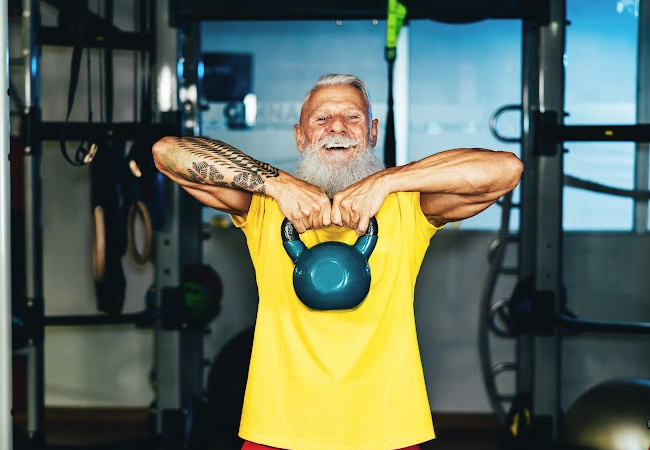
We can also use exercises that enhance balance as means to also work on conditioning. Some of the circuits in the sample routine below are example of this.
Personally I believe that splitting the body up, functionally, in terms of pushing and pulling offers several advantages, particularly when doing strength exercises - working the same movement patterns and soft tissues and joints involved on the same day, leaving the other sessions to allow these to recover.
The Most Important Thing When Training Over 40
The most important thing, and something I cannot stress enough is that as we age, the underlying thing to keep in mind - the prime directive - at all times when doing any sort of training is:
Do not get injured.
Take a full inventory from a sort of "risk/reward" perspective on everything you are doing in the gym, because recovering from an injury at age 55 is a different matter than recovering from one in your 20's.
There is no such thing as a mandatory exercise that everyone has to do, unless you have some specific goal of course such as powerlifting and so on.
Put in a more practical sense, this basically means to change the way you approach training, not expecting to have to or be able to lift like you did in your 20s. It also means not thinking in terms of chasing personal best lifts or "PR's".
Lighten the load. Pay more attention to slower, more deliberate speed/tempo in your exercises, particularly the eccentric or negative part of the rep.
Frequency becomes more important than volume. Heavy days should become less of a staple.
Increase the rep range, keeping them between 8-20 reps, even keeping several reps in reserve.
Listening to your body becomes more critical. The good news is that this becomes easier and more instinctive as we get older and have been training for years.
Full Spectrum Anti-Aging Workout
What follows is a simple workout that will cover most of your bases, while keeping it something that is easy to recover from. The routine covers strength training, bodyweight calisthenic movements, mobility and conditioning.
The amount of sessions per week and days off in between will be very subjective and vary between individuals. It should take about 30 minutes or so to complete.
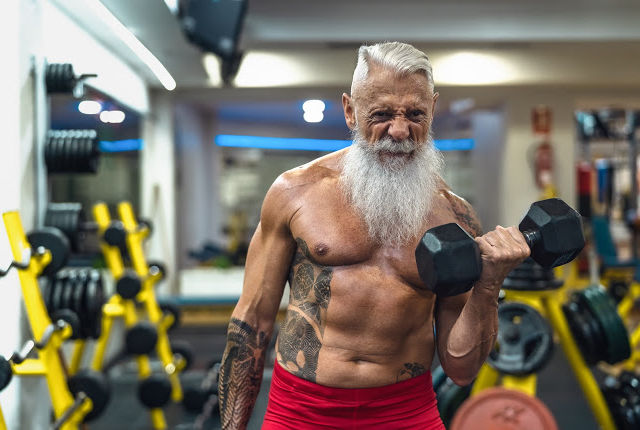
Two to four of these workouts a week with some additional zone 2 sessions should be perfect for the overall plan.
Both workouts are divided into two days, a pull day and a push day; one focused on upper and lower pushing movements, the other on upper and lower pulling ones, thus training 1/2 of your body each workout. Splitting the movements up in this manner makes them compliment each other in terms of carry-over benefits between each exercise.
Pull Day
Block One: Strength
Dumbbell Deadlift or Semi-Sumo Dumbbell Deadlift: 2-3 sets x 6-8 reps
One-Arm Dumbbell Rows: 2-3 sets of 8-15 reps
Dumbbell High Pulls: 2-3 sets of 8-15 reps
Block Two: Bodyweight Circuit
Assisted Chin-Ups or Inverted Rows: 5 reps
V-Sits or Hollow Body Hold: 10-20 reps (or until failure for Hollow Body Hold)
Table Bridges: 10 reps
repeat 3x
Block Three: Conditioning
Lateral Jumps/Bounding: 30 seconds
5-10 seconds rest
Jumping Jacks: 30 seconds
repeat for 10 minutes
Push Day
Block One: Strength
Rear Foot Elevated Dumbbell Squat: 2-3 sets of 8-15 reps
Low Incline Dumbbell Press or Dumbbell Floor Press: 2-3 sets of 8-15 reps
Lying Dumbbell Triceps Extensions: 2-3 sets of 8-15 reps
Block Two: Bodyweight Circuit
Bodyweight Squat: 10-20 reps
Push-Ups: 10-20 reps
Twisting/Rotational High Plank: 30 second hold
repeat 3x
Block Three: Conditioning
Step-Up: 30 seconds
5-10 seconds rest
Running in Place: 30 seconds
repeat for 10 minutes

